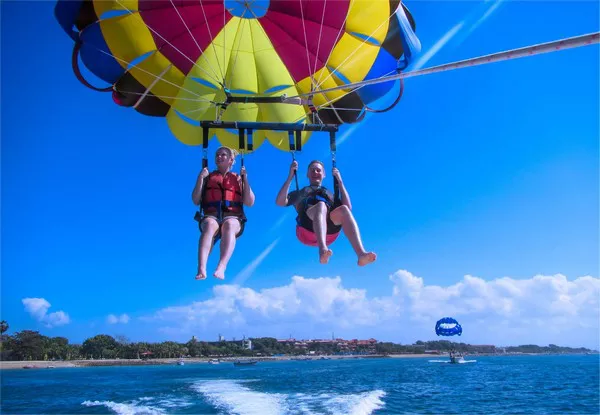Parasailing, a thrilling recreational activity that combines the excitement of flying with the beauty of panoramic views, concludes with a crucial phase: safely returning to solid ground. As the adrenaline from soaring through the sky begins to settle, it’s essential to understand the process of descending from a parasail flight with confidence and precaution.
Understanding the Basics of Parasailing
Before delving into the descent process, it’s beneficial to grasp the fundamentals of parasailing. Typically conducted over water bodies such as oceans, lakes, or bays, parasailing involves being towed behind a boat while attached to a parachute-like canopy. The primary phases of a parasail experience include takeoff, flight, and, importantly, landing or descent.
During flight, the parasail’s altitude can vary, ranging from a few dozen to hundreds of feet above the water’s surface. This elevation offers a breathtaking perspective of the surroundings, making it a favorite among adventure seekers and nature enthusiasts alike.
Preparing for Descent: Communication and Equipment Check
As the parasailing adventure nears its end, the crew on the boat will initiate preparations for the descent. Communication between the crew on the boat and the parasailor in the air is critical during this phase. Hand signals or radio communication may be used to convey instructions and ensure that the descent process is coordinated and safe.
Before descending, the crew will conduct a final equipment check. This includes inspecting the harness, clips, and ropes to confirm that everything is secure and in proper working condition. Any signs of wear or damage would warrant immediate attention and replacement before proceeding with the descent.
The Descent Process Step-by-Step
Initiating the Descent Signal: The crew on the boat will signal the parasailor that it’s time to descend. This is often communicated through pre-established hand signals or radio instructions. The parasailor will be instructed to prepare for landing.
1. Slowing Down and Releasing Tension: To begin the descent, the boat will gradually reduce its speed. This reduction in speed decreases tension on the towline, allowing the parasail to start descending slowly towards the water surface.
2. Approaching the Water Surface: As the parasailor descends, the goal is to gently approach the water surface. It’s crucial for the crew on the boat to maintain a controlled descent speed to ensure a smooth landing.
3. Bracing for Contact: As the parasailor nears the water, it’s essential to adopt a prepared stance. This typically involves lifting the legs slightly to prepare for impact with the water.
4. Contact with Water: Depending on the landing technique used by the crew, the parasailor may either touch down on the water surface or be retrieved directly from the air onto the boat’s platform. Landing in the water is a common practice and requires the parasailor to be comfortable with basic swimming skills.
5. Post-Landing Procedures: Once safely back on the boat or in the water, the crew will assist the parasailor in detaching from the harness and ensuring a smooth transition back to the boat’s deck. This may involve using a ladder or other assistance to facilitate the transition.
Safety Considerations and Best Practices
Ensuring a safe descent from a parasailing adventure involves adherence to established safety guidelines and best practices:
1. Follow Crew Instructions: Always listen carefully to the instructions given by the boat crew. They are experienced professionals trained to ensure a safe parasailing experience.
2. Maintain a Positive Attitude: Stay calm and composed during the descent. Avoid sudden movements and follow the crew’s guidance.
3. Be Prepared for Water Landing: If landing in the water, ensure that you are comfortable with basic swimming skills and wearing appropriate attire for water activities.
4. Inspect Equipment Regularly: Before embarking on a parasailing adventure, ensure that all equipment is inspected and in good condition. Report any concerns to the crew immediately.
5. Weather Awareness: Parasailing should be conducted in suitable weather conditions. Avoid parasailing in strong winds, storms, or other adverse weather conditions.
Conclusion
Descending from a parasailing adventure marks the final phase of an exhilarating experience. By understanding the process and following safety guidelines, participants can ensure a smooth and enjoyable conclusion to their flight. Effective communication with the boat crew, readiness to follow instructions, and adherence to safety protocols are key elements in achieving a safe and memorable parasailing descent.

